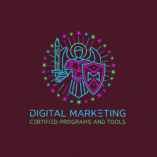In today’s crowded digital landscape, where social media algorithms shift overnight and paid ads devour budgets, one channel consistently delivers unmatched ROI: email marketing. Understanding the right email marketing strategy is essential for small businesses aiming to boost engagement, improve conversions, and drive long-term success. Therefore, if you’re seeking a cost-effective, data-driven approach to marketing, mastering email is non-negotiable.
Email marketing provides direct, personalized access to your audience’s inbox – unlike social media, where visibility is never guaranteed. This channel also enables audience segmentation, delivery of relevant content and lead management. If you’re wondering how to improve your email campaigns, this guide is your starting point for a successful strategy.

What is an Email Marketing Strategy and Why Does It Matter?
Simply put, email marketing strategy refers to the process of sending strategic, targeted messages to subscribers who have given you permission. Unlike cold outreach, these subscribers have opted in. Therefore, engagement is higher and conversion rates stronger.
Why It Works So Well:
- High ROI: For every $1 spent, email marketing returns an average of $36.
- Direct Reach: Bypass algorithmic chaos. Your emails land in inboxes.
- Personalized Communication: Tailor messages to individual behavior and preferences.
- Audience Ownership: Unlike social platforms, your email list is entirely yours.
- Proven Conversions: Email campaigns consistently drive sales and loyalty.

Additionally, email fosters trust. For example, consistent, helpful content builds familiarity and keeps your brand top of mind. Equally important, applying a proper email marketing strategy helps maintain engagement long-term.
How to Build Email Marketing List with Permission and Value
No successful email marketing strategy begins with a purchased list. Rather, focus on growing a permission-based audience that genuinely wants to hear from you. Furthermore, the way you approach your signup process affects long-term performance.
List-Building Essentials:
- Lead Magnets That Work: Offer real value. Think downloadable guides, discount codes, free trials, or exclusive content.
- Strategic Signup Placement: Add forms on homepage banners, pop-ups, blog footers, and social bios.
- Streamlined Forms: The less info required, the more signups you’ll get.
- Use Existing Touchpoints: Embed signup options in receipts, events, and support chats.

In addition, always explain what subscribers can expect. Transparency builds trust and keeps unsubscribe rates low. Anyone looking into how to build email marketing list or how to build email list for email marketing must ensure the signup experience is smooth and rewarding.
Segment, Personalize, and Use AI Marketing Tools for Email Marketing
While personalization gets attention, segmentation drives results. Combining both elevates every email campaign. Furthermore, AI now plays a key role in scaling personalization efforts.
Segmentation Tactics:
-
Demographic criteria: location, age, industry
-
User behavior: purchases, engagement in emails, pages viewed
-
Life cycle stage: new subscribers, regular customers or inactive users
Effective Personalization Examples:
- “We saw you browsing hiking boots…here are our top picks.”
- “Your birthday is coming! Enjoy 15% off.”

Moreover, tools like dynamic content blocks allow you to serve different versions of the same email to various segments. Likewise, using AI marketing tools for email marketing can help generate subject lines, personalize product recommendations, and even optimize send times. Many now consider them among the best AI tools for email marketing for streamlining campaign performance.
Automation and Building an Email List Efficiently
Automation ensures that subscribers receive timely, relevant emails based on real-time actions. It also supports efficient list growth when used properly. Thus, focusing on building an email list while automating communication boosts both productivity and engagement.
Essential Email Automations:
- Welcome Series: Introduce your brand and deliver promised content.
- Abandoned Cart: Recover lost sales with reminders and incentives.
- Post-Purchase Follow-Up: Thank buyers, suggest related items, and collect reviews.
- Re-engagement Campaigns: Win back inactive subscribers.
- Milestone Emails: Celebrate events like birthdays, anniversaries, or loyalty rewards.

Furthermore, automation saves time while delivering a highly personalized experience. Equally, when paired with a robust email marketing strategy, it allows for long-term, scalable success.
Measure, Refine, and Improve Your Email Campaigns
The beauty of email marketing lies in its measurability. Therefore, track everything and refine accordingly. This is especially important for those using an email marketing strategy to scale.
Key Metrics to Monitor:
- Open Rate: Are your subject lines working?
- Click-Through Rate (CTR): Is your content engaging?
- Conversion Rate: Are users taking desired actions?
- Bounce Rate: Clean your list to avoid reputation issues.
- Unsubscribe Rate: High spikes? Reevaluate your content.
- Overall ROI: Is email driving real business outcomes?

Additionally, continuous testing (A/B/N) of subject lines, layouts, send times, and CTA wording helps improve performance over time.
Final Tips to Improve Your Email Marketing Strategy
To recap, a successful email marketing strategy involves much more than just sending newsletters. It’s about:
- Building a clean, permission-based list
- Writing subject lines that get noticed
- Segmenting and personalizing with intent
- Automating smartly
- Measuring and optimizing continually
Ultimately, the key to improving your email campaigns is to stay relevant, valuable, and respectful of your audience’s time and trust. Additionally, integrating tools like the best AI tools for email marketing gives you a competitive edge.
Get started now: Review your signup forms. Create or refine your welcome email. Choose one new automation to implement. Test your next subject line. Then repeat.
Email remains your most profitable digital marketing tool. Use it wisely.









